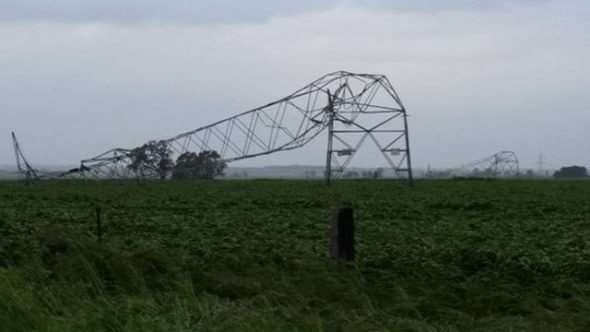Safety Concerns
With the growth of Renewable Energy Zones in the south west of the Victoria, the need for additional electricity transmission network infrastructure is recognised but the safety of community, property, wildlife and the environment, over the entire life of the infrastructure, needs to be considered when evaluating the alignment options for high voltage overhead transmission.

Transmission Tower Collapse
Not only do high voltage overhead transmission lines and towers increase the risks of fires, the infrastructure itself can be easily damaged by wind, lightning and fire, resulting in interruptions to power supply and huge costs to the economy and consumers. What consumers may not aware of is the repair bill for such incidents is passed directly to us. The incident in Cressy alone cost consumers more than $25M in repairs the damaged infrastructure.

Impact to Rescue Efforts
The Lerderderg State Park is accessed regularly by nature lovers and bush walkers. It ias not uncommon for people to become lost or injured in the area necessitating the use of the State Emergency Service and Police Search and Rescue helicopters. Transmission towers located in close proximity to the Park would most certainly impact the ability and timeliness of future rescue efforts. Rescue choppers will often land on the river flats, directly within the northern corridor, to conserve fuel while patients are prepped for extraction from the Lerderderg State Park.

Residual Risks
Although less likely, towers, fences, heavy equipment, trailers, pipelines and many other metal structures and products can become electrically energized by unshielded overhead high voltage power lines. These lines and towers are particularly hazardous during lightning storms (NACE International 2005).

Flight Risk
In addition to lightning strikes and Infrastructure failures, high voltage power lines and towers also pose a significant safety risk to light planes, helicopters, and recreational aircraft.

Join Now
Get Involved
The only way to make a difference is to get involved. It’s easy to sit back and wait for others to do something but when you are staring at 75-85m towers in a few years time, you will kicking yourself for not doing something when you had the chance. This is OUR only chance to stop these towers, so get involved now.
Welcome to the home of Darley Power Fight. A group of residents in Darley, Coimadai and Merrimu, united against high voltage transmission towers passing through our backyard. We came together through the realisation the transmission line will divide a narrow corridor between Darley and the Lerderderg State Park; altering landscape character, causing widespread damage to critical habitat for threatened species, increasing fire risk to the Park and thousands of residents, destroy our visual amenity, harm local agriculture and will impact businesses and property values. It will completely desecrate, in a few years, what nature has taken millions of years to create.







